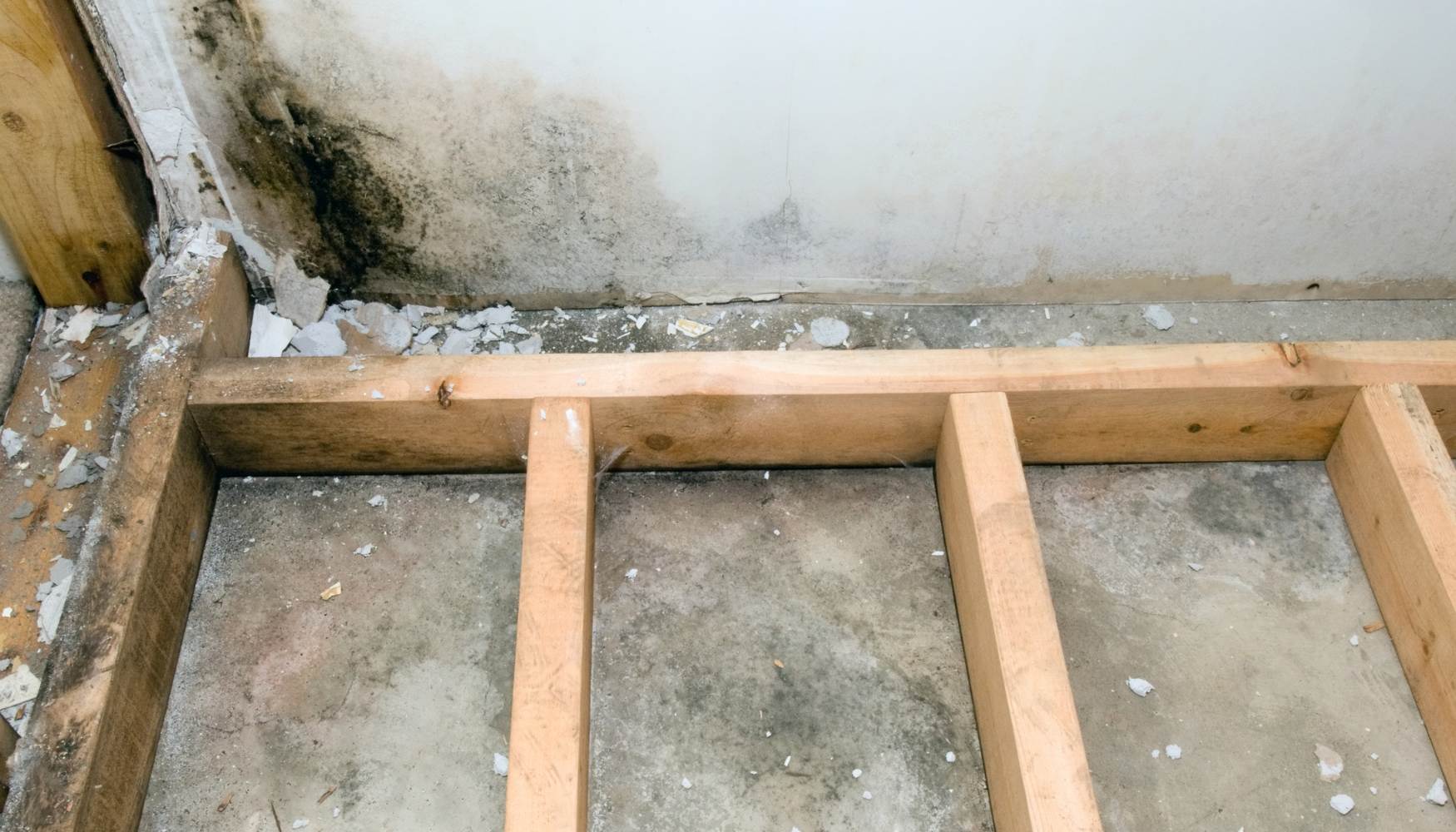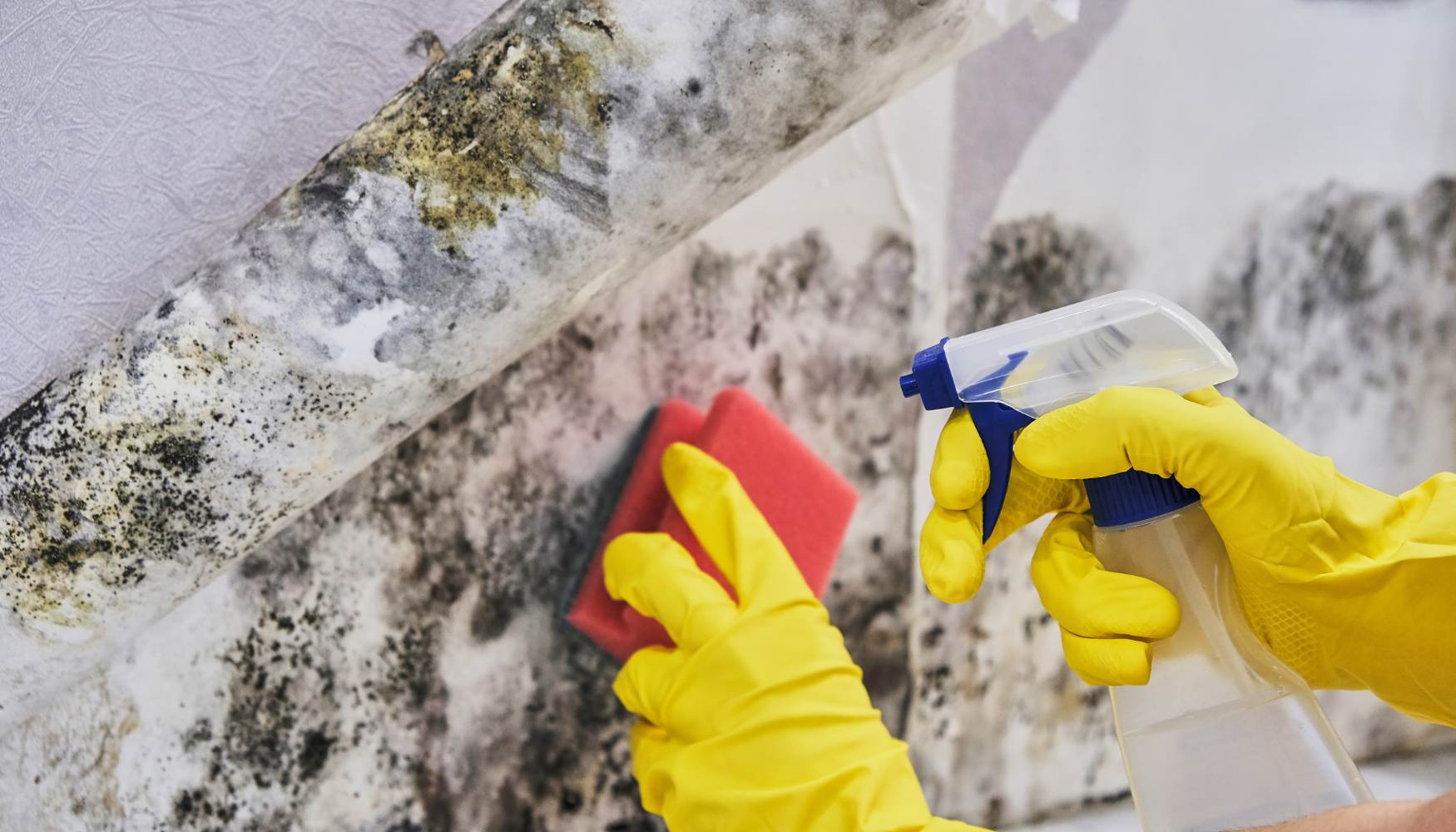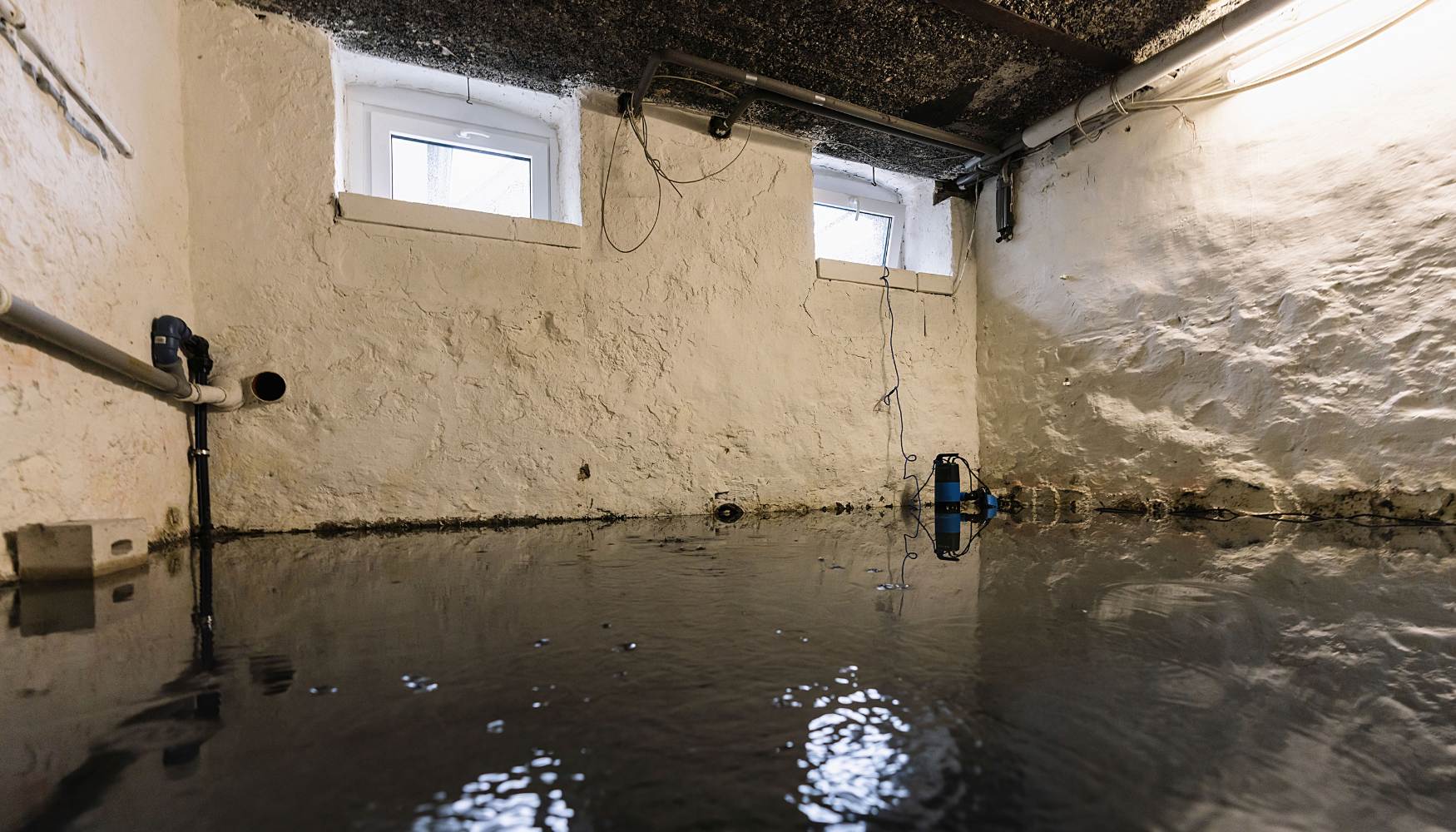Welcome to the dark and mysterious world of basements, where nightmares come to life. Add mold to your basement walls and you have yourself in a horror movie in your own home.
Facing basement mold can be daunting, but it’s possible to use mold abatement measures to eradicate it completely.
So, if you have discovered mold creeping up on your basement walls, fear not — we will guide you on how to remove mold from basement walls, give you tips on preventing this unwanted guest from growing on your basement walls, and more!
Table of Contents
- How Do Basement Walls Grow Mold?
- 5 Signs Your Basement Might Have Mold
- How To Remove Mold From Basement Walls: Does the Material of Your Walls Matter?
- Can I Get Rid of Basement Mold Myself?
- Tips and Tricks for Preventing Mold on Your Basement Walls
- Pure Environmental: Removing Mold Growth From Basement Walls With PurAyr™ Technology
How Do Basement Walls Grow Mold?
Unfortunately, basements are ripe for mold growth for two reasons:
- Excess moisture
- Inadequate airflow
Typically, the excess moisture comes from the ground outside through the foundation and into the walls. Basements are extra susceptible to moisture since they are underground or at ground level, where mold spores thrive.
Leaky pipes, water entering from outside, and condensation also tend to build up in basements. Washers can also be a culprit of water leakage in basements.
Next, add in poor ventilation, which is often the case in basements, and you have yourself an inviting space for mold to grow.

5 Signs Your Basement Might Have Mold
If you are reading this article, you probably already have a hint that mold may be growing in your basement. But how can you be sure? Let’s review some signs that you have an unwanted guest (mold) in your basement.
#1: Musty Odor
If you find yourself holding your breath when you go down into your basement, then you probably have already identified the first sign — a musty odor. Mold can give off an earthy and pungent smell. Mold produces compounds called microbial volatile organic compounds (mVOCs). These compounds are quickly released into the air, releasing the strong smell.
#2: Condensation Build Up
Condensation forms as water droplets gather on cooler surfaces exposed to humid air. You may start noticing condensation build-up on windows in your basement. This indicates elevated moisture in the air, which we know mold loves. Persistent indoor window condensation fosters mold growth.
#3: Dark Spots
Dark spots or small dark specks on the walls or furniture in the room are also signs of mold. Don’t be fooled if the spots are not black — mold can also be disguised in lots of different colors such as gray, green, or white. It can even have some colorful streaks with pink and orange.
#4: Peeling Paint
Peeling paint is a sign of high humidity and therefore can point to mold growth. When mold is visible on the surface, it often suggests hidden mold behind the drywall. As previously discussed, the combination of high humidity and cold surfaces (walls in this case) leads to condensation, fostering mold growth. This mold adversely affects how the paint adheres to the wall. High levels of humidity can cause the paint to peel or crack, as it is not able to bond properly with the wall material.
#5: Allergies or Health Issues
Mold is no joking matter when it comes to your health. Stuffy nose, wheezing, and red or itchy eyes are all common symptoms related to mold allergy and should not be something you brush off.
Mold can also trigger asthma attacks in some individuals. Some people also can get aspergillosis, which is an infection caused by mold. This often occurs in people who are immunocompromised or have a lung disease.

How To Remove Mold From Basement Walls: Does the Material of Your Walls Matter?
The short answer is yes. Typically, basement walls are concrete or drywall, and there are different ways mold enters these walls, gets trapped, and should be removed.
No matter what material you’re working with, the use of personal protection equipment is critical. Disposable coveralls, gloves, respirator masks, boots, goggles, etc., are all necessary. It is also important to always wash your hands and body thoroughly to minimize exposure to mold toxins.
How To Remove Mold From Concrete Basement Walls
Mold is generally rare on concrete basement walls. But if you do see signs of mold on basement walls, it typically comes from organic terrestrial material that has been washed through the wall from outside. The mold can also grow on the paint on the concrete walls. Want to hear some good news? It is usually a nontoxic mold.
Here are the steps on how to remove mold from concrete basement walls:
- Wear proper protective equipment (goggles, respirator, boots, etc.).
- Prepare the area by removing any furniture, boxes, or other items you may have stored in your basement that are close to the wall. Mold can creep into adjacent items.
- Scrub and scrape! If there is mold underneath the paint, you will need to first scrape off the paint. You will physically scrub and scrape the surface with a mold-killing cleaning solution such as vinegar, hydrogen peroxide, or bleach. A HEPA vacuum and air scrubber are recommended. These tools make the job easier and also ensure you are removing all the mold on the surface. If your home is pre-1978 make sure to test the paint for lead prior to removal.
How To Remove Mold From Drywall Basements
Finished basements are often framed out over the concrete and then covered with drywall and painted. Typically, mold grows on the drywall itself as the drywall is susceptible to mold growth. If this occurs, the drywall must be removed but the wood framing can be cleaned.
Drywall is made from cellulose insulation which is a paper-like material. The empty space or cavity where your wall is framed traps the water that comes through the concrete wall behind the drywall. It often manifests as an odor. You often don’t see the mold until you pull the trim of the baseboards.
Here are the steps on how to remove mold from drywall:
- Same as before, it’s very important to wear proper protective equipment.
- Determine the extent of the damage. If the mold is just on the paint, you may be able to remove the mold by scrubbing with a mold-killing solution.
- If the drywall has mold, you will need to cut out and remove the drywall. It is important to bag and dispose of the moldy material safely.
- Next, you will need to clean the wood framing by scrubbing it and allowing it to dry fully before replacing the drywall.
Can I Get Rid of Basement Mold Myself?
You could. Tackling basement removal on your own is possible, but to do it properly, it is a large investment in equipment, materials, and tools as well as a major investment of time and effort.
Mold cleanup is an intricate process, requiring specialized equipment and supplies. Professionals have all of this equipment on hand and also know what needs to be done to properly and safely to remove the mold. It’s important to kill or remove all the mold spores so you don’t have another mold invasion. For these reasons, you may want to save this home project for the professionals.
Entrust the task to Pure Environmental — equipped with the specialized tools and extensive training, we ensure the job is done correctly, preventing the return of this unwelcome guest to haunt your basement.
Tips and Tricks for Preventing Mold Growth on Your Basement Walls
After reading all about the process of how to remove mold from basement walls, you probably want to avoid having to go through this process if possible.
How do you prevent mold from growing? Here are a few tips:
- Keep your basement as dry as possible.
- Ensure proper ventilation inside and proper drainage outside your basement.
- Remove items (plants, wet towels, firewood, etc.) that may be a source of moisture or mold spores.
- Inspect your laundry system if it is in your basement, as it is often a common place to have leaks.
- Clean your basement regularly.
- Insulate your water pipes.
- Address home maintenance problems to deter moisture infiltration by taking immediate action to fix foundation problems, leaky pipes, and unsealed windows and doors.

Pure Environmental: Removing Mold From Basement Walls With PurAyr™ Technology
If you are battling mold in your basement in the Pacific Northwest, make Pure Environmental your ally, and let us take care of the mold for you. We can save you the hassle, investment of materials, and time of trying to do it yourself.
Our process is thorough and meticulous.
Beginning with an initial inspection to confirm the presence and extent of the mold, we will determine the containment zone. After necessary material removal, we apply specialized chemicals to address any remaining mold. Using a specialized vacuum with a HEPA filter, we clean the surfaces to catch any fine particles.
We take mold removal to the next level with our PurAyrTM Technoloogy — a game-changer in air and surface decontamination. Designed to safely eradicate mold, PurAyrTM swiftly oxidizes and neutralizes contaminants. To ensure comprehensive remediation, when testing is needed or required we rely on third-party testing agencies. If needed, we also repair or replace affected materials.
You can trust Pure Environmental to take care of the mold, so your basement no longer resembles a horror movie scene!
Recent posts
- Advice From the Pros: How To Hire a Contractor for Home Renovations
- After the Fire: What To Expect From Smoke Damage Restoration Services
- Home Insurance During Renovations: What Is Covered and What To Know Before Getting Started
- Mitigation and Restoration: Understanding the Difference Between the Two and Why They’re Both Necessary
- Should You Stay or Should You Go? Know When To Walk Away From a House With Mold
